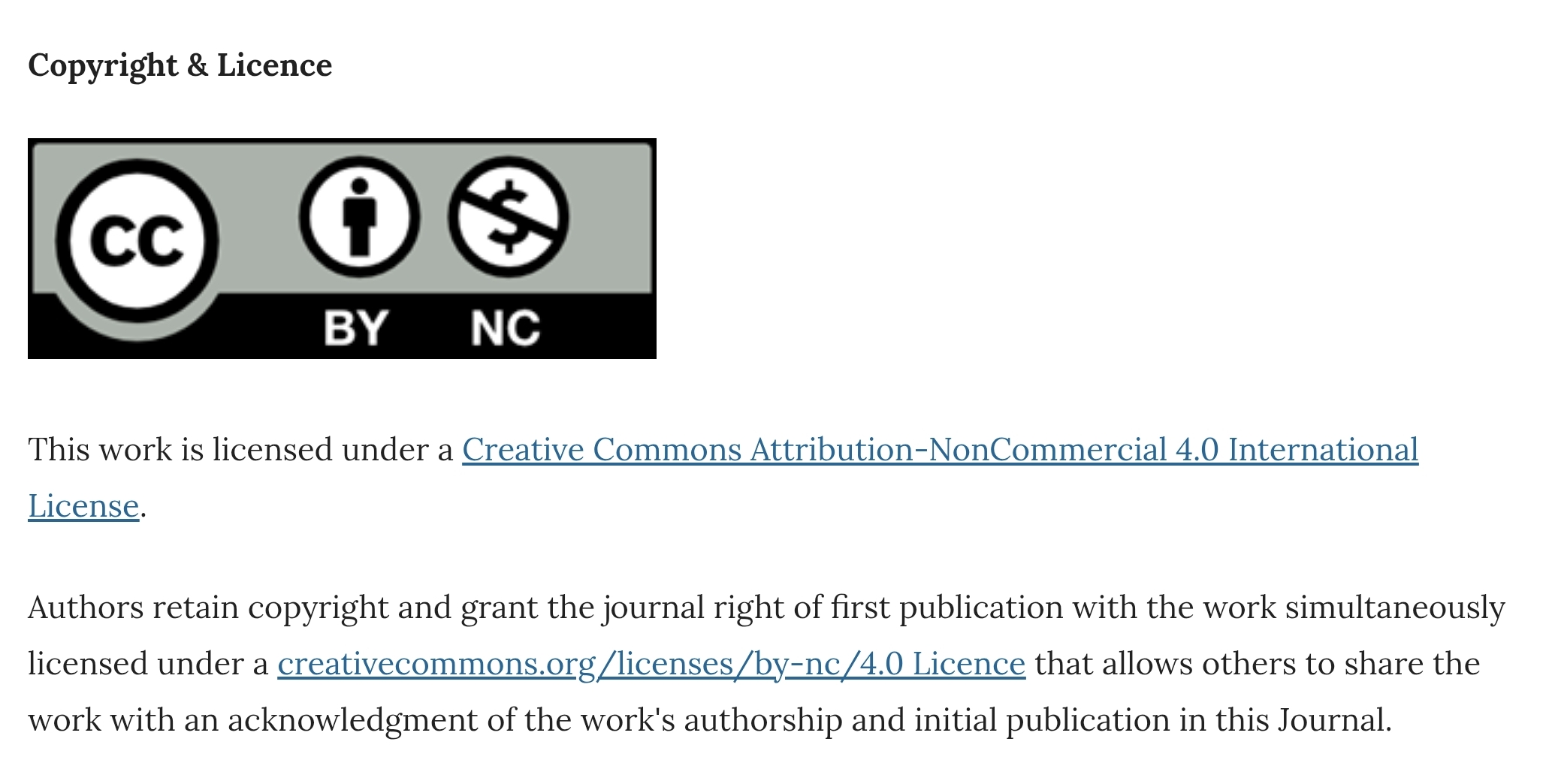Association of tobacco smoking with bipolar affective disorder- a comparative cross-sectional study at a tertiary care centre in south India
DOI:
https://doi.org/10.30834/KJP.33.2.2020.215Keywords:
bipolar affective disorder, tobaccoAbstract
Background: Smokers with psychiatric disorders, most notably those with serious mental illness and substance use disorders tend to present with more severe nicotine dependence and nicotine withdrawal than smokers without these illnesses. The following study aims to explore the correlation of smoking with bipolar affective disorder
Setting and design: The comparative cross-sectional study was done in Amrita Institute of Medical Sciences & Research Centre, Kochi, a 1,450-bed hospital for a period of 2 years.
Methods and materials: Seventy subjects with Bipolar affective Disorder who were in remission for at least two months and Seventy subjects who were relatives of paediatric outpatients were included in the study and control group, respectively. Clinical variables were assessed, and Hamilton depression rating scale, Young mania rating scale and Fagerstorm nicotine rating scale were administered to the subjects.
Results: In this study, 52.9% of subjects with bipolar disorder were found to be smokers, and 51.4% of the normal population were smokers. No significant association was observed between bipolar affective disorder, and smoking tobacco, however, a significant correlation was found between smoking status and the total number of episodes of the disorder, psychotic episodes and suicide attempts.
Conclusion: There appears to be a relationship between smoking tobacco and certain clinical features of bipolar affective disorder. It is possibly a bidirectional relation between these two disorders.
Downloads
References
Fiore MC, Jaen C R. A clinical practice guideline for treating tobacco use and dependence: a US Public Health Service report. Am J Prev Med.2008 Aug;35(2): 158-76.
Hughes JR, Hatsukami DK, Mitchell JE, Dahlgren LA. Prevalence of smoking among psychiatric outpatients. Am J Psychiatry 1986;143(8): 993-7.
Waxmonsky JA, Thomas MR, Miklowitz DJ, Allen MH, Wisniewski SR, Zhang H, et al. Prevalence and correlates of tobacco use in bipolar disorder: data from the first 2000 participants in the Systematic Treatment Enhancement Program. Gen Hosp Psychiatry 2005;27(5): 319-20.
Chang CK, Hayes RD, Broadbent M, Fernandes AC, Lee W, Hotopf M, et al. All-cause mortality among people with serious mental illness (SMI), substance use disorders, and depressive disorders in southeast London: a cohort study. BMC Psychiatry. 2010;10: 77. Accessed from: https://doi.org/10.1186/1471-244X-10-77
Heffner J L, Strawn J R, Del Bello MP, Strakowski SM, Anthenelli R M. The Co-occurrence of Cigarette Smoking and Bipolar Disorder: Phenomenology and Treatment Considerations. Bipolar Disorder. 2011 Aug-Sep; 13(5-6): 439–53.
Anatoly K, Dmitri N, Rabinowitz D. Association between tobacco smoking and bipolar affective disorder: clinical, epidemiological, cross-sectional, retrospective study in outpatients. Compr Psychiatry. 2012. 53(3); 269-74.
World Health Organization. The ICD-10 classification of mental and behavioural disorders: ICD-10; clinical descriptions and diagnostic guidelines. Geneva: World
Health Organization; 1992. 362 p.
Montgomery SA, Asberg M. A new depression scale designed to be sensitive to change. Br J Psychiatry 1979; 134: 382–89
Young RC, Biggs JT, Ziegler VE, Meyer DA. A rating scale for mania: reliability, validity and sensitivity. Br J Psychiatry 1978; 133(5): 429–35
Dijkstra A and Tromp D: Is the FTND a measure of physical as well as psychological tobacco dependence? J Subst Abuse Treat 2002; 23(4):367-74
Gonzalez-Pinto A, Alberich S, Barbeito S, Alonso M, Vieta E, Martinez-Arán A, et al. Different profile of substance abuse in relation to predominant polarity in bipolar disorder: the Vitoria long-term follow-up study. J Affect Disord 2010;124(3): 250-5.
Swann AC. Bipolar disorder and substance abuse: two disorders or one? J Dual Diagn 2005;1(3): 9-23.
McEachin RC, Saccone NL, Saccone SF, Kleyman-Smith YD, Kar T, Kare RK, et al. Modeling complex genetic and environmental influences on comorbid bipolar disorder with tobacco use disorder. BMC Med Genet 2010;11: 14.
Cassidy F, Ahearn EP, Carroll BJ. Substance abuse in bipolar disorder. Bipolar Disord 2001: 3(4): 181–88.
Thomson D, Micheal B. Tobacco use in Bipolar Disorder. Clin Psychopharmacol Neuroscience. 2015 Apr; 13(1): 1–11.
Grucza RA, Bierut LJ. Cigarette smoking and the risk for alcohol use disorders among adolescent drinkers. Alcohol Clin Exp Res 2006;30(12): 2046-54
Kupfer D J. The Increasing Medical Burden in Bipolar Disorder. JAMA 2005; 293(20):2528-30
Corvin A, O'mahony E, O'regan M, Comerford C, O'connell R, Craddock R, et al. Cigarette smoking and psychotic symptoms in bipolar affective disorder. Br J Psychiatry 2001;179: 35-8.
Li-Shiun Chen, Hong Xian, Richard A. Grucza. Nicotine Dependence and Comorbid Psychiatric Disorders: Examination of Specific Genetic Variants in the CHRNA5-A3-B4 Nicotinic Receptor Genes, Drug Alcohol Depend.2012 Jun; 123 Suppl 1: S42–S51
Ostacher M J, LeBeau R T, Perlis R H, Andrew A N, Hannah G L, Samantha J M, et al. Cigarette smoking is associated with suicidality in bipolar disorder. Bipolar Disord. 2009 Nov;11(7): 766-71.
Simon GE, Hunkeler E, Fireman B, Lee JY, Savarino J. Risk of suicide attempt and suicide death in patients treated for bipolar disorder. Bipolar Disord. 2007;9(5):526–30.
George TP, Wu BS, Weinberger AH. A review of smoking cessation in bipolar disorder: Implications for future research. J Dual Diagn. 2012;8(2): 126–30.
Downloads
Published
How to Cite
Issue
Section
License
Copyright (c) 2020 Kerala Journal of Psychiatry

This work is licensed under a Creative Commons Attribution-NonCommercial 4.0 International License.











